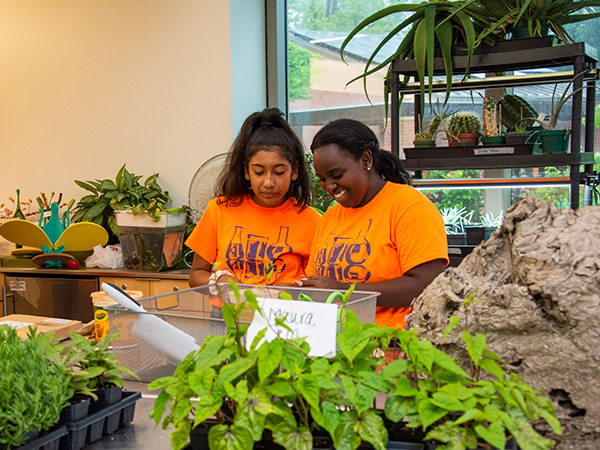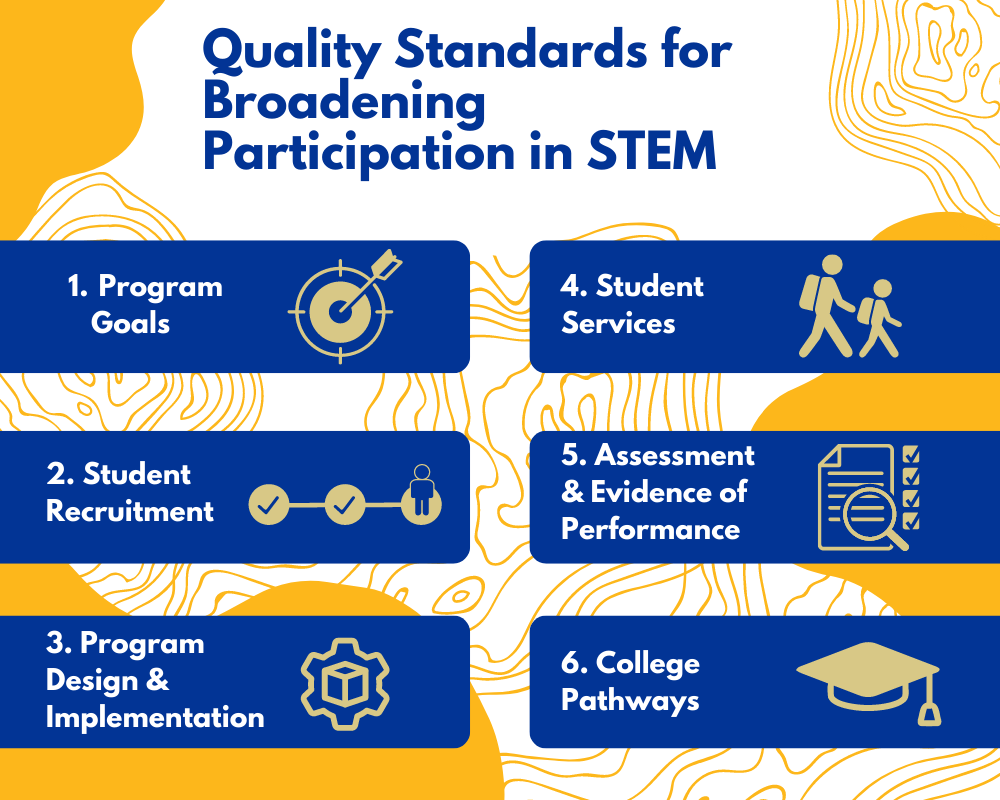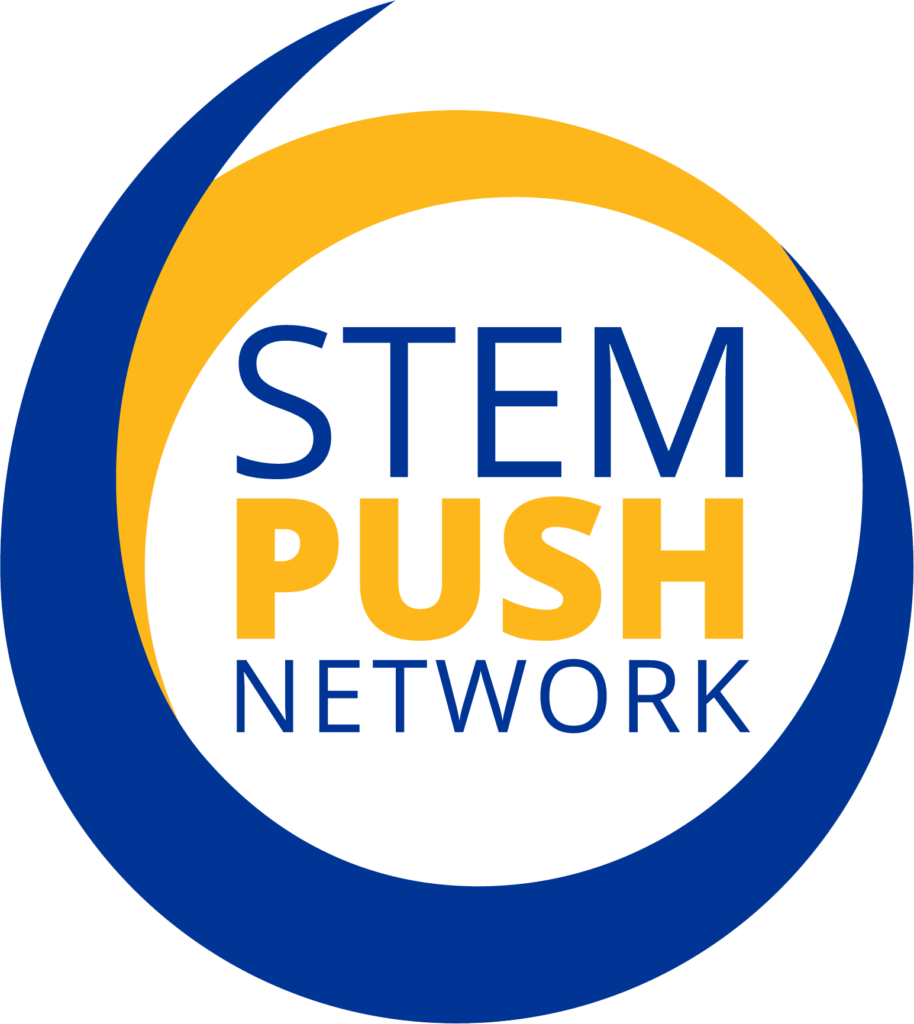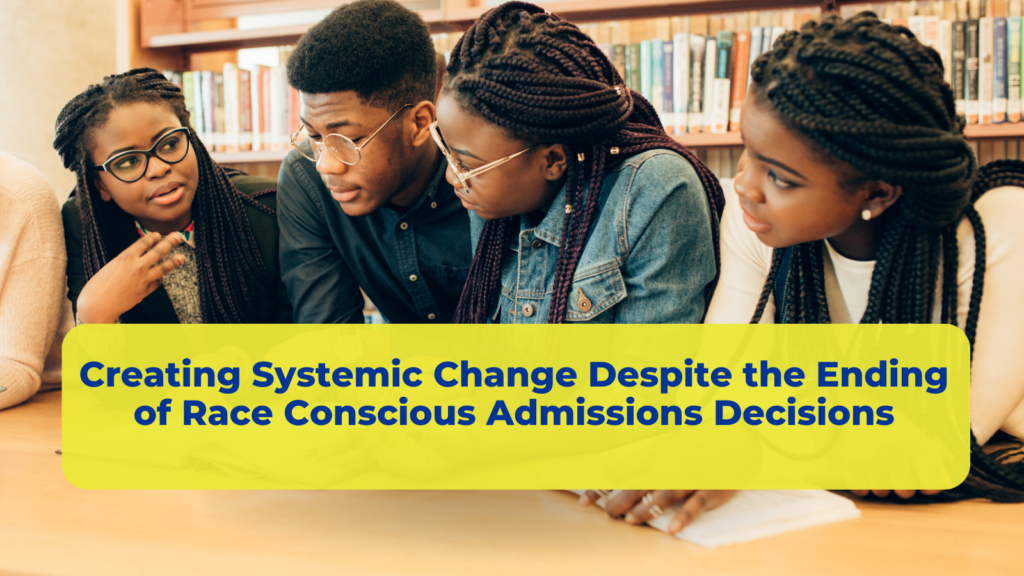In STEM PUSH, the networked improvement community (NIC) is our learning engine.
Our networked improvement community is the learning engine in which pre-college STEM programs to strengthen their capacity to support Black, Latina/o/e/x and Indigenous students in STEM.
Pre-college STEM programs try out small changes to improve their programs’ ability to serve Black, Latina/o/e/x, and Indigenous students. They also improve pathways leading to undergraduate institutions for STEM study.
Based on our learning, we hope that these tested routines can then be used by other out-of-school providers to better serve Black, Latina/o/e/x and Indigenous students in STEM.
By 2026, the STEM PUSH Network will increase the capacity of 40 pre-college STEM programs to support Black, Latinx, and/or Indigenous students on a pathway to STEM undergraduate study.
Explore Our Learning Engine
Root Cause Analysis
We first engaged in a collaborative process to understand why precollege STEM programs working alone had not significantly broadened participation in STEM.
The STEM PUSH Network uses a collective impact approach called a networked improvement community.
What is a Networked Improvement Community?
A Networked Improvement Community (NIC) is a specialized form of a network, defined by four key characteristics that make it a powerful structure to engage in the complexity of broadening participation in STEM:
Focused
Guided
Disciplined
Coordinated
From Bryk, A. S., Gomez, L. M., Grunow, A., & LeMahieu, P. G. (2015). Learning to improve: How America’s schools can get better at getting better. Cambridge, MA: Harvard Education Press.
Root Cause Analysis
We first engaged in a collaborative process to understand why precollege STEM programs working alone had not significantly broadened participation in STEM.
Root Cause Analysis
We first engaged in a collaborative process to understand why precollege STEM programs working alone had not significantly broadened participation in STEM. To do this, our root cause analysis engaged a range of partners and stakeholders in a disciplined, collaborative exploration of the system causing the problem the network is seeking to address, stated as:
While many precollege STEM programs are successful in attracting and supporting racially/ethnically minoritized (REM) high school students, these programs have not been systematically leveraged to increase the number of REM students admitted to undergraduate STEM programs. Why?
Through this process, we reflected on the various ways in which oppression functions to exclude racially minoritized students from STEM, and then considered how that manifests in the context of PCSPs and admissions. This included looking at data, research, practitioner voices, and student experiences.
A fishbone diagram is an improvement science tool we use to help us visualize the results of our “root cause analysis” process.
Theory of improvement
Once we had mapped our best understanding of the system producing our problem, we brought our stakeholders together to agree on what we wanted to accomplish (our aim) and to identify the most high leverage areas that we could work on to achieve that aim (our theory of improvement).
Theory of Improvement
Once we had mapped our best understanding of the system producing our problem, we brought our stakeholders together to agree on what we wanted to accomplish (our aim) and to identify the most high leverage areas that we could work on to achieve that aim (our theory of improvement).

A theory of improvement is a set of hypotheses about how we get to meaningful collective impact on our shared problem. It combines our understanding of the system creating the problem we are seeking to solve with our “best bets” about the most high-leverage areas we can target to achieve our aim.
A driver diagram represents our working theory of improvement, and is therefore subject to revision as we learn. We use it to organize, capture learning, and then refocus our work together. Our driver diagram articulates the overarching aim that STEM PUSH Alliance partners are collectively working toward, the shared aim of the Networked Improvement Community (NIC) specifically, and the key drivers that we’re targeting in order to achieve that aim.
As part of the NIC, pre-college STEM programs test “change ideas” rooted in our working theory of improvement, which identifies the key levers we believe will increase programs’ capacity to serve Black, Latina/o/e/x and Indigenous students and move us towards our collective aim of increasing STEM undergraduate enrollment and persistence. Programs engage in improvement cycles during which they implement change ideas and work with STEM PUSH improvement science experts to use tools and metrics which support testing these changes as part of a disciplined inquiry process.
STEM PUSH Driver Diagram
Our networked improvement community tests change ideas against our overall aim to increase the capacity of pre-college STEM programs to support Black, Latina/o/e/x and Indigenous students on pathways to STEM undergraduate studies.
Here is a deep dive into our change ideas identified at the beginning of our work.
"If we want to accomplish [aim], we must [primary driver]."


Quality Standards for Broadening Participation in STEM
Focusing all this work is a set of evidence-based practices for precollege programs to effectively support Black, Latino/a/e/x, and Indigenous students on a path to STEM postsecondary education. We use the standards to help programs reflect and plan, to help us see network needs and assets, and to help us benchmark progress over time.
Upon joining the network, each program partner completes a self-study that is aligned with this set of standards. We use the standards to tether our work to evidence-based practices, to help programs reflect and plan, to help us see network needs and assets, and to help us benchmark progress over time.
Quality Standards
Focusing all this work is a set of evidence-based practices for precollege programs to effectively support Black, Latino/a/é/x, and Indigenous students on a path to STEM postsecondary education. We use the standards to help programs reflect and plan, to help us see network needs and assets, and to help us benchmark progress over time.
What are we learning?
Focusing all this work is a set of evidence-based practices for precollege programs to effectively support Black, Latina/o/e, and Indigenous students on a path to STEM postsecondary education. We use the standards to help programs reflect and plan, to help us see network needs and assets, and to help us benchmark progress over time.
1. Program Goals
2. Student Recruitment
3. Program Design and Implementation
3.3.1 Program is focused on rigorous STEM content.
3.3.2 Program content is reflective of advances in applicable STEM fields.
3.4.1 Program environment, activities and policies promote understanding of and respect for the cultural backgrounds of youth and their families.
3.4.2 Activities stimulate positive STEM identities and sense of belonging in both STEM community and on college campus.
4. Student Services
5. Assessment and Evidence of Performance
6. College Pathways
*While it is recognized that staff and/or volunteers reflecting the demographic characteristics of the students being served is important, it is also recognized that many programs have limited personnel, and this may put undue burden on potential staff/volunteers that are underrepresented minorities in their fields.

